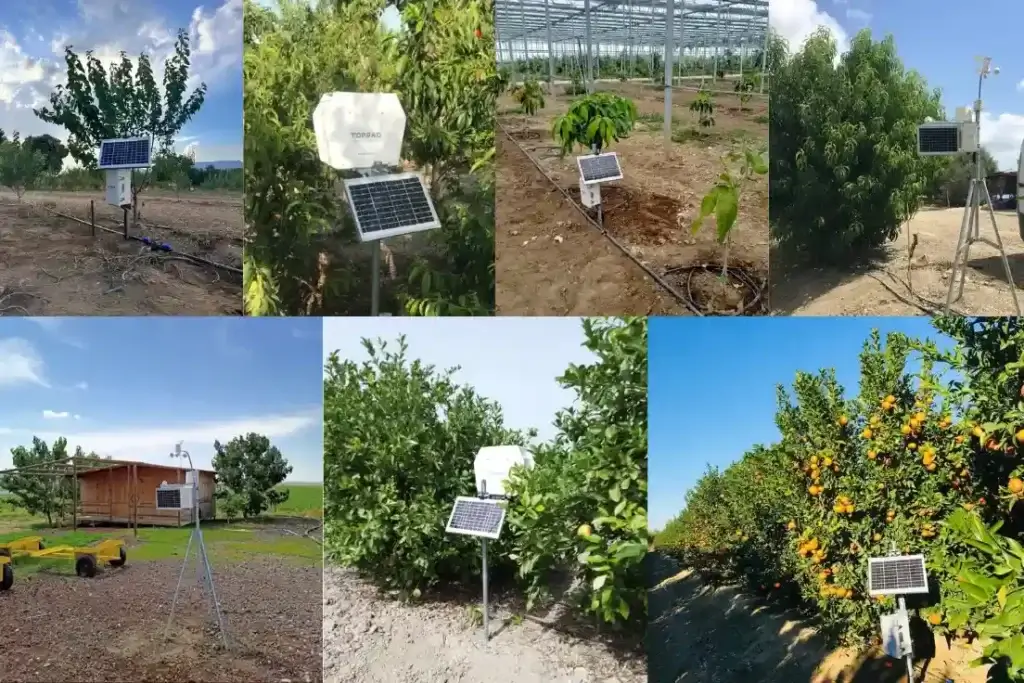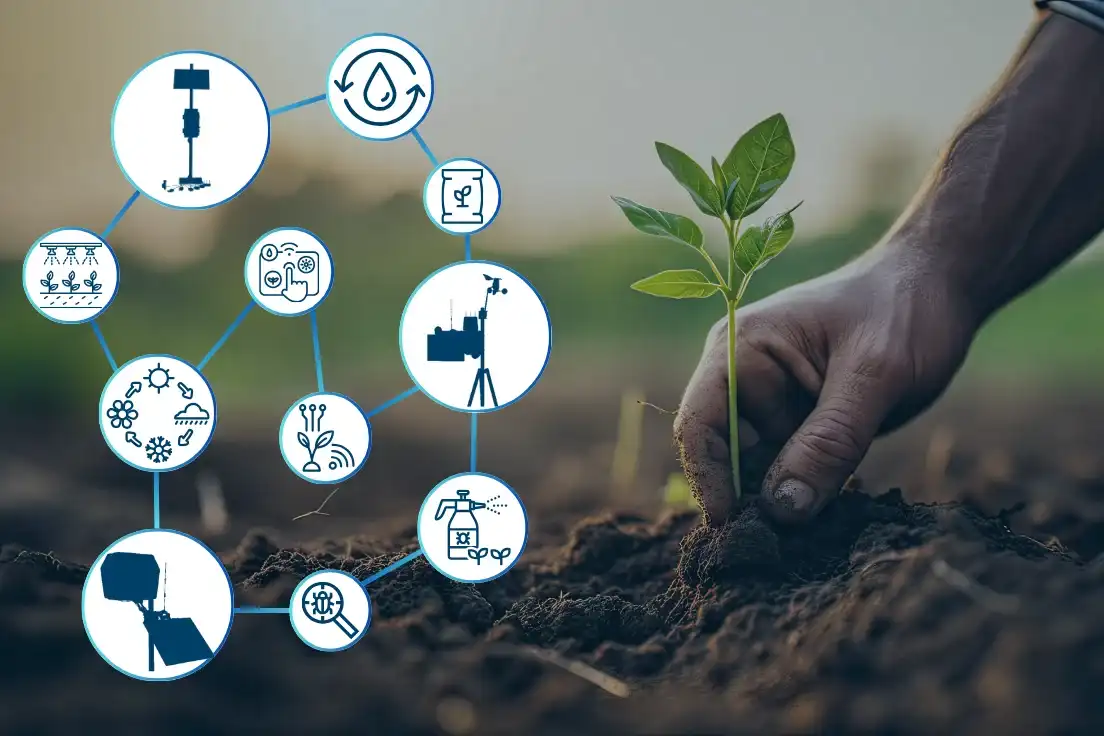The current environmental challenges are more pressing than ever. In a world where food security and agricultural production face significant problems, sustainable agricultural practices emerge as a beacon of hope. Techniques like regenerative agriculture, agricultural technologies, optimized irrigation, and intelligent pest management stand as crucial contributors to our collective future. This blog post will intricately examine the principles of regenerative agriculture, shedding light on its environmental impact and its potential role in shaping the future of agriculture.
Understanding Regenerative Agriculture
At its core, the primary objective of regenerative agriculture is to elevate soil health, foster biodiversity, and pioneer sustainable farming methods. Diverging from conventional agricultural practices that often deplete soil fertility and heavily depend on chemical inputs, regenerative agriculture aspires to cultivate a system that is not only resilient but also self-sustaining.
Soil Health: The Foundation of Regenerative Agriculture
The foundation of successful agricultural production lies in nurturing healthy soil. Implementing sustainable practices, such as integrating cover cropping, embracing crop rotation, and adopting smart irrigation systems, holds the key to a thriving agricultural future. Smart irrigation not only helps retain vital soil moisture but also empowers farmers to judiciously manage their water resources, preserving valuable nutrients within the soil. It’s crucial to recognize the detrimental effects of over-irrigation — a practice that, much like insufficient irrigation, damages soil health. Excessive irrigation can render the soil inhospitable, impeding the healthy growth of plant roots. To illustrate, prolonged over-irrigation may lead to waterlogged conditions, nutrient leaching, and the degradation of soil structure. The shift towards optimized irrigation practices not only reduces these damages but also contributes significantly to sustainable and productive agriculture.
Biodiversity: Nature’s Harmony in Agriculture
Central to the principles of regenerative agriculture is the crucial emphasis on biodiversity. This focus extends beyond the mere cultivation of crops, as diverse ecosystems play a pivotal role in building resilience and reducing the risks associated with pests and diseases. This harmonious balance not only enhances the health of the soil but also contributes to the overall performance of the agricultural landscape. The diversity in plant species and the promotion of beneficial organisms create a dynamic ecosystem that can adapt and thrive, showcasing the potential for a more sustainable and resilient approach to agriculture.
Technology’s Role in Shaping Agriculture’s Future
Technology plays an indispensable role in everyone’s life, and farmers are no exception to its transformative influence. Recent advancements, particularly the integration of Artificial Intelligence and Algorithms, have brought about substantial changes in the agricultural landscape. This evolution has created a completely different era marked by innovation and state-of-the-art tools. From cutting-edge irrigation optimization stations to digital pest traps and smart meteorological stations equipped with intelligent sensors, these technologies seamlessly provide farmers with tailored assistance. Going far more than conventional monitoring, these stations equip farmers with comprehensive insights into soil health, plant health, and real-time updates on pest populations in their fields.
In this era of agricultural innovation, the synergy between technology and farming opens new frontiers. The integration of smart technologies not only streamlines operations but also cultivates a sustainable and efficient approach. As agriculture continues to embrace these advancements, the narrative shifts towards a future where technology serves as a guiding force, steering farmers toward informed choices and sustainable agricultural practices. The harmonious coexistence of technology and agriculture unfolds as a narrative of progress, promising a more sophisticated, efficient, and sustainable path forward.
Topraq: The Future of Farming
Agricultural technologies and regenerative agriculture are not just trends; they stand as transformative revolutions changing the course for the future of farming. At Topraq, our primary mission is to drive agriculture toward a sustainable future. Recognizing the imperative to seamlessly integrate technology into the lives of farmers, we have pioneered a brand new approach—the subscription model. This innovation not only ensures accessibility to cutting-edge technological solutions but also enables us to continuously update our stations in alignment with the evolving needs of our farmers, all without imposing an additional financial burden on them. We are committed to fostering a future where technology and sustainable farming practices merge for the benefit of both farmers and the agricultural landscape.

T-Irrigate: Precision Irrigation for a Water-Conscious Future
The tale ends when we drain our water resources. Unfortunately, only 2.5% of Earth’s water is suitable for agriculture, and a staggering 72% of this precious resource is directed towards agricultural practices. With water being a limited asset, the responsibility to utilize it efficiently and intelligently becomes paramount.
In response to this imperative, our AI-based irrigation optimization system, T-Irrigate, emerges as a vital solution. Strategically positioned smart soil moisture and temperature sensors, among others, gather field data, which is then uploaded to our cloud data platform. Using the power of Artificial Intelligence and our advanced Algorithms, this data is processed to formulate customized irrigation plans and establish critical field thresholds.
Our commitment to meeting farmers’ needs is reflected in the integration of soil moisture, temperature, and EC (Electrical Conductivity) sensors. Tailored to aid fertigation decisions, these sensors allow farmers to monitor the electrical conductivity levels of the soil. Equipped with this data, farmers can make scientifically informed choices about when and how to implement fertigation, optimizing not only their fertilizer costs but also nurturing a healthy soil structure conducive to maximum crop yield. In this way, we strive not just to innovate but to empower farmers with the tools they need for sustainable and efficient agricultural practices.
T-Weather: Nurturing Optimal Growing Conditions
The significance of monitoring weather conditions in agricultural fields has never been more pronounced. Global climatic changes greatly affect agricultural production, constantly subjected to the mercy of weather. In response to this vulnerability, our smart meteorological station, T-Weather, emerges as an indispensable tool. Offering real-time 15-day weather forecasts directly from farmers’ fields, T-Weather empowers farmers to make informed operational decisions with confidence. Beyond forecasts, T-Weather generates user-friendly reports encompassing key metrics and calculations such as ET0 (Evapotranspiration), Solar Radiation, Air Temperature, Growing Day Degree, and Degree Day. These comprehensive reports serve as a valuable resource, enabling farmers to proactively address issues related to plant health and diseases.
In the dynamic intersection of technology and agriculture, T-Weather goes beyond mere forecasting; it becomes a proactive ally in the quest for optimized farm management. By providing a wealth of data and actionable insights, it ensures that farmers are not just responding to weather conditions but are actively shaping a resilient and productive agricultural landscape.
Optimizing Plant Nutrition for Maximum Crop Yield: A Holistic Approach
Navigating the complex landscape of plant nutrition involves understanding the diverse factors influencing nutrient uptake in plants and trees. To maximize crop yield, it is imperative to embrace a comprehensive approach that integrates irrigation data, weather data, and plant-specific information. By combining these diverse datasets, a holistic perspective emerges, enabling the creation of precise prescriptions tailored to the unique needs of each crop. This strategy not only acknowledges the complexity of plant nutrition but also empowers farmers with the tools needed to optimize their agricultural practices and achieve heightened productivity.
As Topraq amid regenerative agriculture, technology, and sustainable practices, we look ahead to a future where farming becomes more than just a job—it’s a way of coexisting with nature. By taking steps toward progress today, we envision a landscape where agriculture thrives sustainably, benefiting both the earth and those who care for it for generations to come. Explore our agritech solutions today and make a responsible move toward the future.

